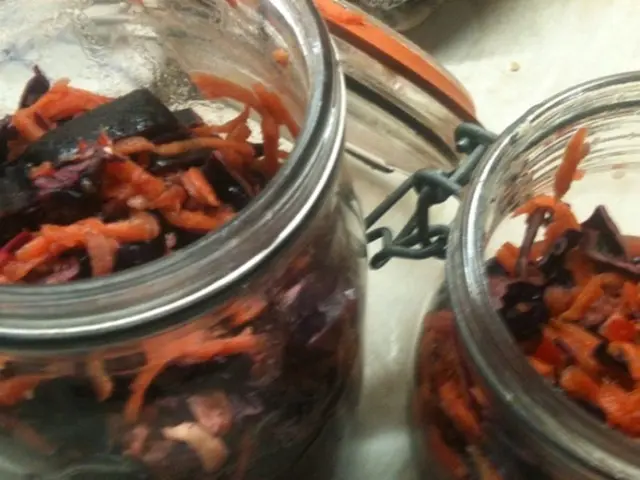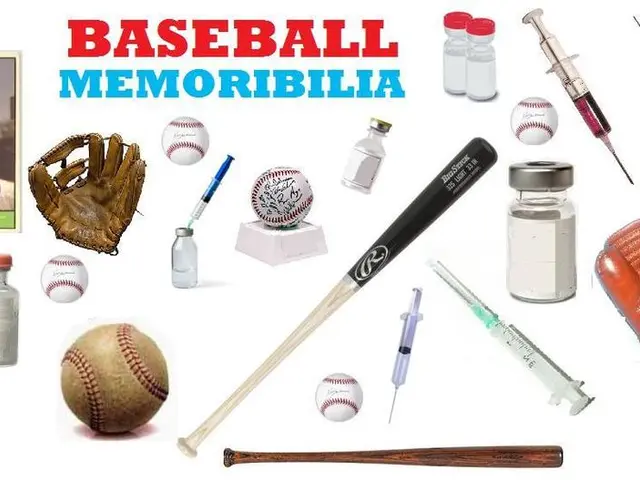Scientists propose lab-generated teeth as a replacement for fillings and dental implants.
Human Teeth Generation Nears Lab Reality: A Game-Changer for Dentistry
Ever dreamed of saying goodbye to those dreadful dental fillings and root canals? Scientists are inching closer to bringing that dream to life with lab-grown replacement teeth. This groundbreaking development could revolutionize dental care, offering better alternatives to current treatments that often lead to complications.
Recently, a team of researchers, led by King's College London, crafted a unique material enabling cells to communicate as they do in the human body, paving the way for tooth cell development. By replicating the environment in which teeth naturally grow, the scientists were able to cultivate teeth from a patient's own cells.
So, what's currently stopping us from swapping out damaged or infected teeth with real ones? Well, humans are not like sharks or crocodiles, creatures known for their ability to constantly regenerate teeth throughout their lives. While humans do grow two sets of teeth, the stem cells required for continuous growth disappear after the adult teeth appear.
This breakthrough, recently published in the journal ACS Macro Letters, could open the gates to a future where tooth replacement spares us from unpleasant dental repairs.
Did you know that humans grow approximately 20 primary teeth, or baby teeth, starting at around six months of age? These are gradually replaced by 32 permanent teeth beginning at around age 6? However, lasting only until the appearance of wisdom teeth, usually between 17 and 25, these permanent teeth are our limitations compared to tooth-regenerating organisms like sharks.
While dentists currently use fillings or tooth implants to fix damaged teeth, these solutions have their downsides. Fillings can weaken tooth structure over time and may require replacement, while implants can risk infection and damage to surrounding teeth and gums. The researchers behind this lab-grown tooth development describe both solutions as "artificial," which can lead to long-term complications.
Is lab-grown teeth the solution we've been waiting for? While it's still early days, researchers believe these lab-grown teeth would be stronger, longer-lasting, and less likely to be rejected by the body. Moreover, lab-grown teeth would integrate naturally with the jaw, just like a real tooth.
But how do they plan to implement this? The scientists are still working to figure out the best method for introducing a tooth into the mouth. They are considering two possibilities: transplanting the young tooth cells at the location of the missing tooth and allowing them to grow inside the mouth, or creating the whole tooth in the lab before implanting it.
As this technology progresses, the potential to improve dental care is immense. The researchers behind the study express optimism, believing that lab-grown teeth could pave the way for long-lasting, natural, and effective solutions to tooth repair and regeneration.
Related:
- **9 Teeth Facts You Probably Didn't Know
- The Ultimate Guide to Human Teeth Growth
- Shark Teeth: A Deep Dive into Shark Tooth Regeneration
Bonus Fact:
Sharks can grow up to 30,000 teeth in their lifetime, replacing their sets every two weeks [2]. In contrast, humans typically grow 20 primary teeth starting at six months of age and 32 permanent teeth starting at around age 6, which are replaced during tooth eruption and root resorption in the protoconid and metaconid [5].
[2] Nicastro, N. (2012). The teeth of animals and their evolution. Smithsonian Institution Press.
[3] Wright, S. R. (2017). The Development of Teeth. Oxford University Press.
[5] Patterson, D. S., & Forer, A. (2014). General and Comparative Osteology. Elsevier.
- In the realm of health-and-wellness, scientists are making strides in the science of dentistry, working to grow replacement teeth in labs, which could potentially revolutionize the way we deal with dental issues and reduce complications.
- As research continues, the application of this groundbreaking science could lead to a future where lab-grown teeth become a natural, longer-lasting, and effective solution for tooth repair and regeneration, significantly improving health-and-wellness in dentistry.




